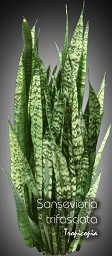Table of contents
Snake plant

Latin Name: Sansevieria trifasciata
Category: Sansevieria
Family: Liliaceae
Origin: South Africa
Climate: Subtropical
Growing Zones: 11, 9
Care Instructions
The Snake plant (Sansevieria trifasciata) is a subtropical plant that originates from South Africa. This sansevieria plant belongs to the Liliaceae family and is well-suited for growing in USDA zones 11, 9.
Complete Care Guide for Snake Plant (Sansevieria trifasciata)
Watering Requirements
The Snake Plant, also known as Sansevieria trifasciata, is renowned for its resilience and low maintenance needs, particularly when it comes to watering. This hardy succulent thrives in dry conditions, making it ideal for novice gardeners or those with busy lifestyles. Watering should be done sparingly; allow the top 1-2 inches of soil to dry out completely before watering again. During the growing season (spring and summer), a bi-weekly watering schedule is generally sufficient, while in the dormant months (fall and winter), you can reduce watering to once a month or even less. Overwatering is the most common mistake made with Snake Plants, leading to root rot, so always err on the side of caution. If you notice the leaves becoming mushy or yellowing, it’s a sign that you may be watering too frequently.
Light Conditions
Snake Plants are incredibly versatile when it comes to light conditions. They can thrive in a range of lighting environments, from low light to bright, indirect sunlight. However, for optimal growth, it is best to place them in bright, indirect light. Direct sunlight can scorch their leaves, leading to unsightly brown tips. In low-light conditions, the plant may grow more slowly, but it will still survive. If you notice the leaves stretching towards the light, it’s a sign that your Snake Plant is not receiving enough light. To maintain a healthy plant, consider rotating it occasionally to ensure even light exposure on all sides.
Soil Preferences
When it comes to soil, Snake Plants prefer a well-draining potting mix. A cactus or succulent mix is ideal, as it allows excess moisture to escape, preventing root rot. If you want to create your own mix, combine regular potting soil with sand or perlite to enhance drainage. Fertilization is not a strict requirement for Snake Plants, but if you wish to encourage growth, you can apply a balanced, diluted liquid fertilizer during the growing season (spring and summer) every 4-6 weeks. Avoid fertilizing in the fall and winter when the plant is dormant, as this can lead to nutrient buildup and potential damage.
Pests and Diseases
While Snake Plants are generally resistant to pests and diseases, they can occasionally fall victim to common houseplant pests such as spider mites, mealybugs, and scale. To identify these pests, look for webbing, sticky residue, or small cotton-like clusters on the leaves. If you notice any of these signs, treat the plant with insecticidal soap or neem oil, ensuring to cover both the tops and undersides of the leaves. Additionally, be cautious of overwatering, which can lead to root rot and fungal infections. If you suspect root rot, remove the plant from its pot, trim away any affected roots, and repot it in fresh, dry soil.
Special Care Tips
To keep your Snake Plant thriving, consider the following special care tips. First, avoid placing your plant in drafty areas or near heating vents, as sudden temperature changes can stress the plant. Additionally, while Snake Plants are tolerant of neglect, they will benefit from occasional dusting of the leaves to enhance their ability to photosynthesize. Use a damp cloth to gently wipe the leaves, which will also help prevent pests. If you notice the leaves becoming too tall or leggy, you can prune them back to encourage bushier growth. Finally, be mindful of the pot size; Snake Plants prefer to be slightly root-bound, so only repot when necessary, typically every 2-3 years.








